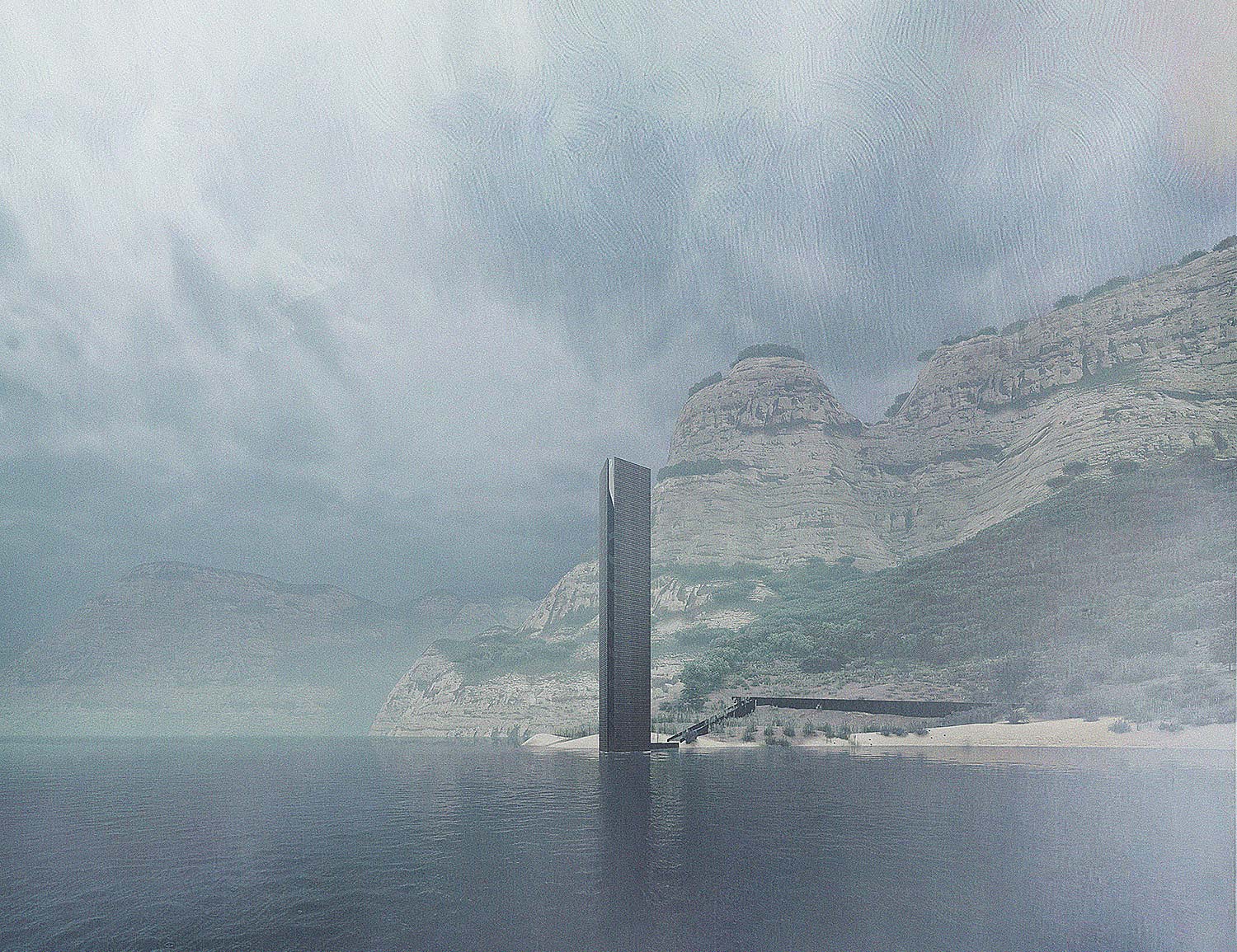
沉没的教堂
LA CATHÉDRALE ENGLOUTIE
– ROUTE TOWARDS THE CHURCH
We can only imagine the possible improper satisfaction of the authority when the little sacrifice of the Sant Romà de Sau, a remote historical town sitting among the mountains, whose remains are now underneath the water, nowadays gradually turns into a tourist spot. It is chosen to be flooded for an infrastructure project to supply water for the cities of the grandiose Barcelona. The contemporary heavily social-media-dependent tourism asks for great angles for photo taking, and who would say that the tower of a well-aged church above the water surface would not make a great scene.
Despite the stunning view, our attitude remains that this is a beautiful scar. People do understand in the great course of development, sacrifices are sometimes necessary. But the negligence and justification with the tool of entertainment can be more tragic than the sacrifice itself. We want the scar to remain a scar, to retrieve the historical meaning of the site with the colour of repentance and reflection. The retrieval is made possible by creating a narrative with a few elements.
Viewing from above, we see two straight lines. One extending from the woods on the existing path from the parking lot, the other points directly to the tower of the old church. As the reservoir has become increasingly more fun based, our purpose is to construct a direct and undisturbed route from the parking lot to the scene of the church, creating a series of scenes on the way.
Scene 1: the wall
The journey begins at the parking lot. After parking, visitors walk through a small woods to see a long wall beside the path. Carved on it would be the whole history of Sant Romà de Sau, a thousand years of it. Visitors follow the history on the wall and eventually find themselves in front of a door where the whole story ends: right before the decision of building the dam.
Scene 2: the path
Behind the door is a straight path. Visitors carry on their journey by going past the door toward the “tomb stone”: a thirty meters tall rectangle that stands at the end of the path. The road is carved into the ground, leading the visitors directly to the entrance.
Scene 3: the entrance
At the end of the path is the stairs leading to the door. As the ground floor of the watch tower is beneath the water, it is designed that visitors will stare at the scene beneath the water while entering. We want to create an image of suffocation by leading people under the water.
Scene 4: the stairs
After entering the door, the visitors will be surprised to find out that the “tomb stone” is actually a triangular building with an opening pointing at the old church. They will start climbing up while this connection becomes increasingly clear. This journey from the bottom of the water to the skylight above is a repentant journey for them to experience what’s been buried underneath.
Scene 5: the deck
Guilty is not the feeling we are looking for. Reflection is far more subtle and sincere. After climbing to the top, visitors will have a view over the reservoir, the tip of the tower and the other buildings on the other side of the water. Right above them is a pyramid symbolising the reversed roof of the church tower. People are welcomed to stay here for a little while to rest and to think.
The trouble of constructing such a building is that it usually requires more solemn materials like concrete. But as is known, concrete can unleash tons of greenhouse gas during construction. The challenge is to use a material that is both environmental friendly and solemn. Our solution is to use the carbonised surface wood. The wood boards are smoked by fire, creating a deep dark surface that would suit the atmosphere we are looking for. It is also a rot-resisting and water-proof material.
TYPOLOGY 类型| 景观建筑 Landscape Architecture
LOCATION 地点| 西班牙 El Pantà de Sau of Spain
CLIENT 业主| Larsen Liverpool;El Pantà de Sau Government
YEAR 时间| 2021
STATUS 状态| 竞赛一等奖 Competition 1st Prize
SIZE 面积| approx. 200㎡
TEAM 团队| 徐嘉韵 XU Jiayun,黄思行 HUANG Sixing,郭皓阳 GUO Haoyang
